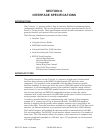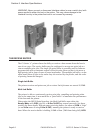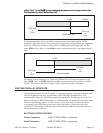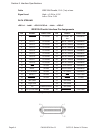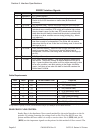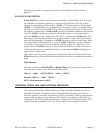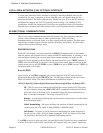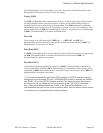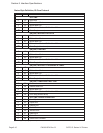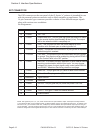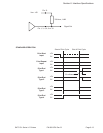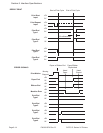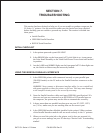(20 hexadecimal) for the ID number, six “zero” characters (30 hexadecimal) in the
Remaining Labels bytes and the 16 byte Job Name.
Cancel (CAN)
If a CAN (18 hexadecimal) command is received , it will stop the print job and clear
all data from the receive and print buffers. A delay of five milliseconds or more is
required before any new data can be downloaded. The CAN command is effective
immediately upon receipt, even if the printer is off-line or in an error condition. The
printer will return an ACK (06 hexadecimal) if there is no printer error condition and
a NAK (15 hexadecimal) if an error condition exists.
Print Job
Upon receipt of a valid print job (<ESC>A...<ESC>Z),anACK (06
hexadecimal) will be returned by the printer if there are no errors and a NAK (16
hexadecimal) if a printer error exists.
Print Stop (DLE)
If a DLE (10 hexadecimal) is received by the printer, the print process is stopped and
an ACK (06 hexadecimal) is returned if there are no errors and a NAK (16
hexadecimal) if a printer error exists.
Print Start (DC1)
If the printer has been stopped by receipt of a DLE (10 hexadecimal) command, it
can be restarted by sending a DC1 (hexadecimal 11) command. Upon receipt of this
command an ACK (06 hexadecimal) is returned if there are no errors and a NAK (16
hexadecimal) if a printer error exists.
(1) To provide compatibility with older SATO printers, the RS232 interface can be
configured to use an earlier Bi-Com 3 ENQ/ACK/NAK protocol selected via DSW2-8
and DSW1-7/8 (on the RS232 Interface module).The earlier protocol did not have
provisions for the Job Name and did not respond to the DLE or DCI commands.
Also, there are additional Response Codes in the Status Byte Definition. It is
recommended that you use the current protocol rather than the earlier version unless
it is necessary for compatibility with existing software.
SATO CL Series “e” Printers PN 9001074 Rev. B Page 6-9
Section 6. Interface Specifications



